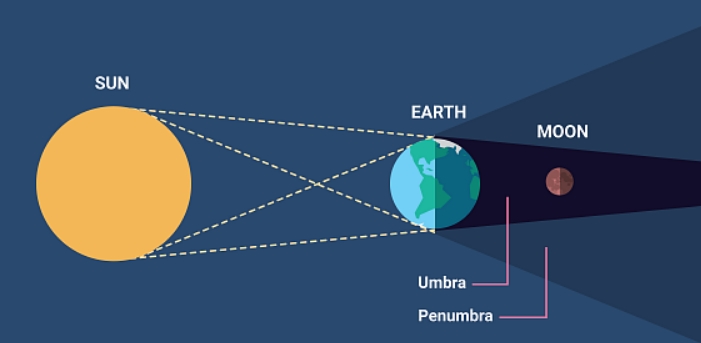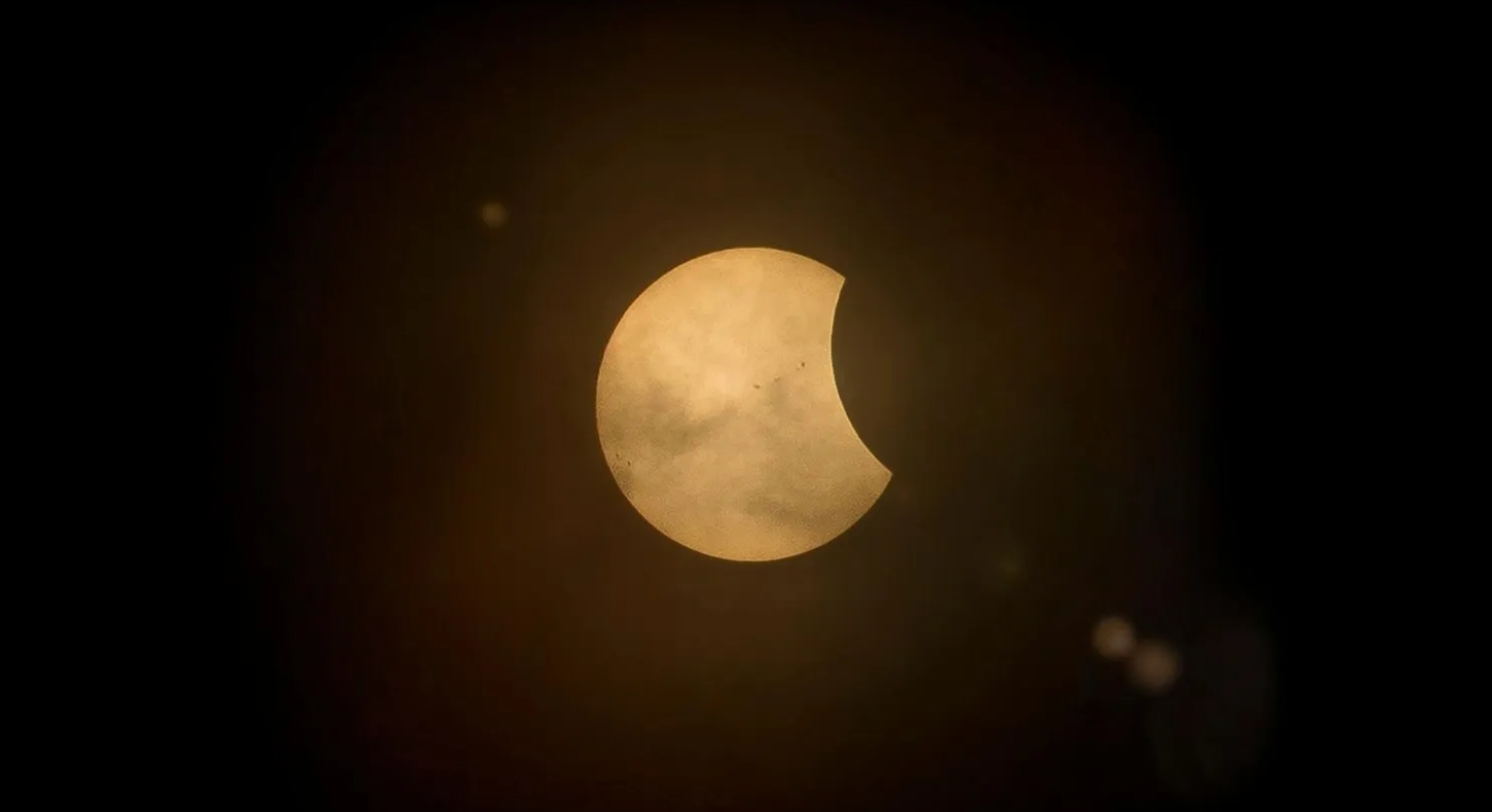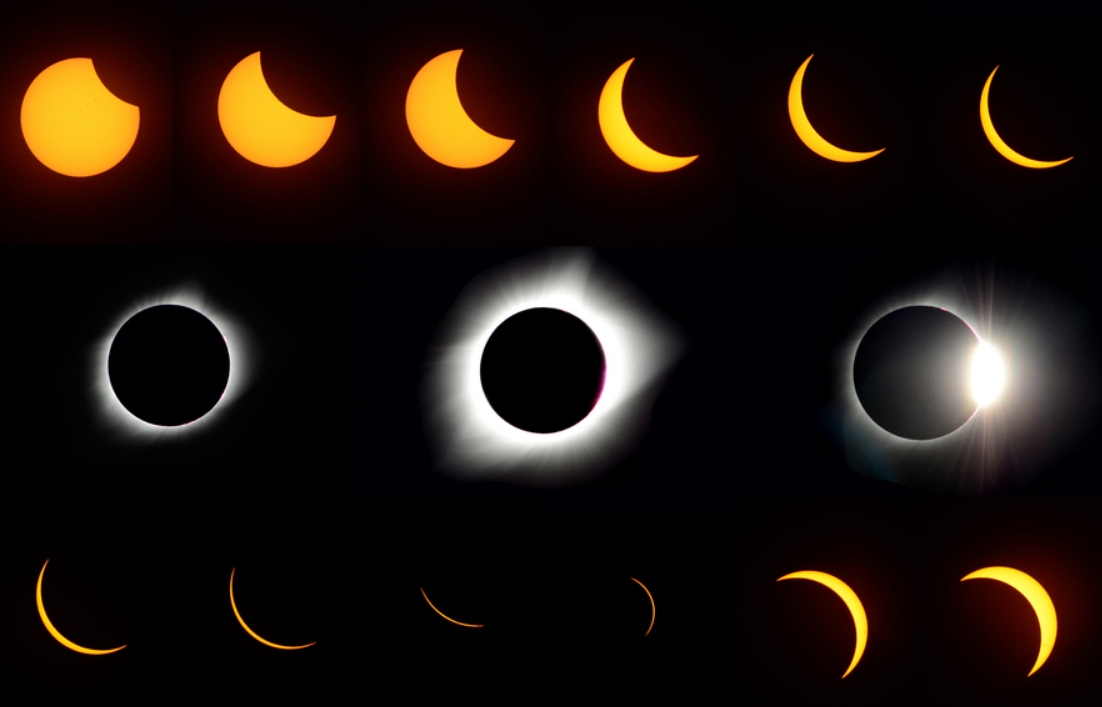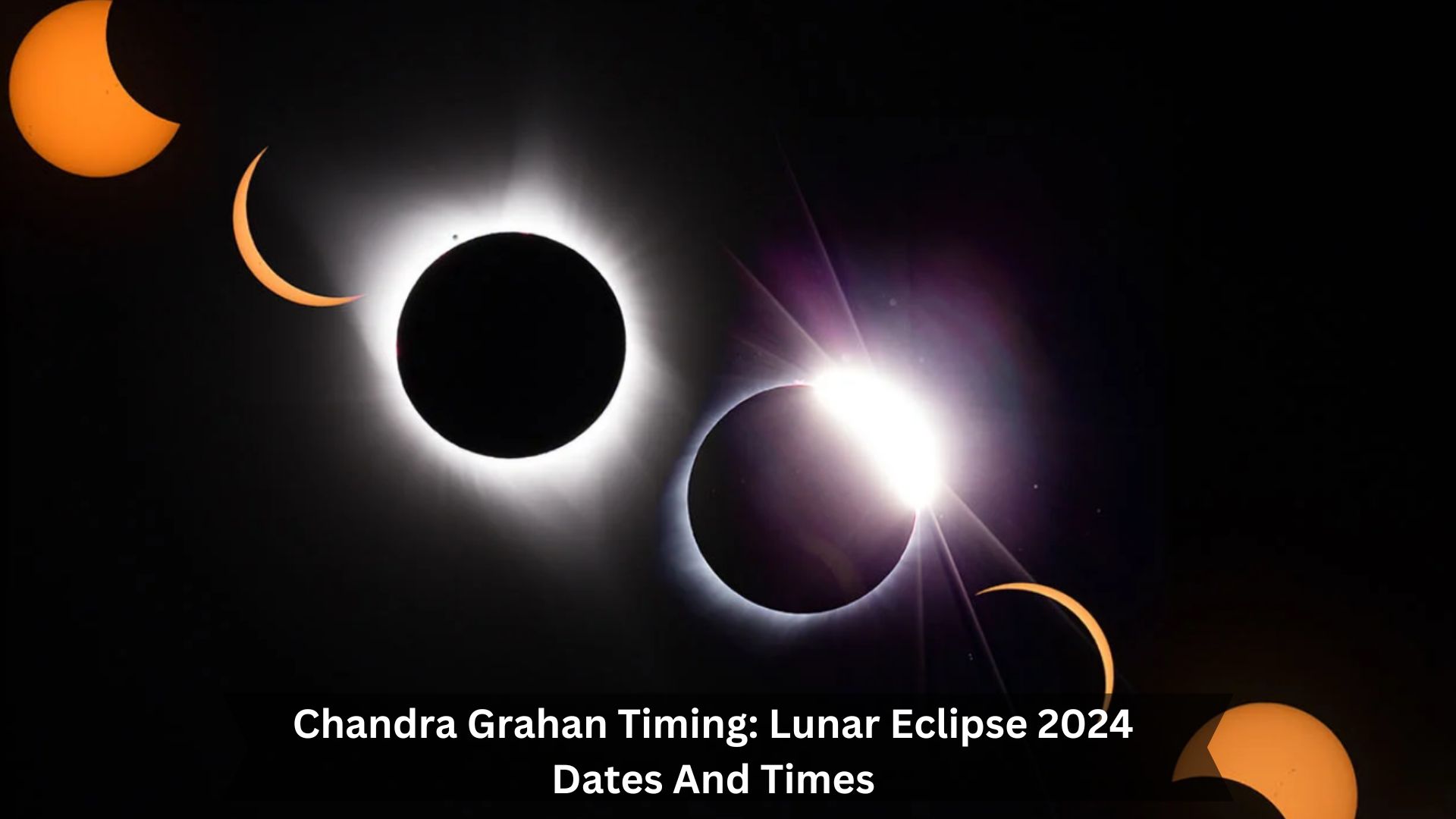A lunar eclipse, or Chandra Grahan, is a fascinating event when Earth lines up between the sun and the moon, throwing a shadow on the moon. This isn’t just a beautiful spectacle; it’s also a chance for both scientists and culture buffs to learn more. Historically, people have been amazed by lunar eclipses, seeing them through the lens of various traditions and myths worldwide.
As 2024’s lunar eclipses draw near, it’s vital to know when they’ll happen. This helps everyone from casual sky-watchers to severe researchers. These eclipses will be visible in many places, showing us how connected our solar system is.
What is a Lunar Eclipse?
Definition and explanation

A lunar eclipse happens when the Earth gets in between the Sun and the Moon, throwing a shadow over the Moon. It only occurs during a full moon when the Sun, Earth, and Moon line up with the Earth in the middle.
As the Earth and Moon orbit around each other, sometimes they line up just right so that the Earth blocks the sunlight that usually reaches the Moon. The shadow that the Earth casts has two parts: the penumbra, which is a lighter shadow, and the umbra, which is a darker shadow. Whether you can see the eclipse and how long it lasts depends on where you are on Earth and how these celestial bodies are aligned.
Types of lunar eclipses
Learning about the different types of lunar eclipses can help us better understand these cool sky events. A lunar eclipse happens when Earth lines up right between the sun and the moon, throwing a shadow on the moon. There are three main kinds: total, partial, and penumbral.
Let’s break it down. In a total lunar eclipse, Earth’s complete shadow, called the umbra, completely covers the moon. This often makes the moon look reddish, which is pretty neat. It’s because Earth’s atmosphere filters sunlight. Only part of the moon dips into Earth’s umbra in a partial lunar eclipse. So, you see, just a part of the moon darkened. Then there’s the penumbral lunar eclipse, which is the most subtle. It happens when only the lighter, outer part of Earth’s shadow, the penumbra, falls on the moon. This just causes a slight dimming, which can be hard to notice.
See Also – Ganga Aarti Time In Haridwar: Complete Timings And Details
Chandra Grahan Timing for 2024 Lunar Eclipse

Dates
In 2024, we’ll have two lunar eclipses. The first one is on March 25th. It’s a penumbral lunar eclipse, meaning the Moon will get a bit darker as it passes through the edge of Earth’s shadow. It’s not very dramatic, but it’s still cool to see.
The second eclipse is on September 18th. This one is a partial lunar eclipse. Part of the Moon will look dark as it moves into the deeper part of Earth’s shadow. Each event allows us to see how the Earth, Moon, and Sun line up. Plus, they’re different from each other, so you get two unique shows in one year.
| Date | Type of Eclipse | Eclipse Begins (IST) | Maximum Eclipse (IST) | Eclipse Ends (IST) | Visibility in India |
|---|---|---|---|---|---|
| March 25, 2024 | Penumbral Lunar Eclipse | 10:23 AM | 12:42 PM | 03:02 PM | Not Visible |
| September 17-18, 2024 | Partial Lunar Eclipse | 10:14 PM (Sep 17) | 10:44 PM (Sep 17) | 12:47 AM (Sep 18) | Visible across India |
Local timings
Knowing when the 2024 lunar eclipses occur in your area is crucial to catching them. Eclipses occur at different times during the night, depending on where you are.
Check out an eclipse calculator or an astronomy app to get the exact times. These tools tell you when the eclipse starts and ends, right down to the minute. You can also look for schedules from local observatories or astronomy clubs. They often share details early, so you can plan and ensure you don’t miss out.
Visibility in different parts of the world
To understand when you can see the lunar eclipses in 2024, let’s look at where and when they’ll be visible. The first eclipse will be best seen in the Americas, Western Europe, and parts of Africa. You can catch the eclipse from late evening to early morning if you’re in these areas. Just hope for clear skies!
The second eclipse has a broader audience. It will be visible in Asia, Australia, Africa, and again the Americas. If you’re in Asia or Australia, you must stay up from late night to just before dawn to see it. It’s an excellent chance for regular folks and experts to watch this fantastic sky show.
Tips for Viewing the 2024 Lunar Eclipse
Dos and don’ts

Watching a lunar eclipse is genuinely captivating. Just remember a few essential tips to make it even better. First off, find a spot away from city lights. This makes the moon and stars much more straightforward. It’s also a good idea to bring a comfy chair since eclipses last a while. If you’ve got binoculars or a telescope, definitely use them. They let you see unique details on the moon.
Also, check the weather beforehand to ensure it’s clear. And try not to use your camera flash. It takes your eyes a while to adjust to the dark, and a flash will mess that up—not just for you, but for others nearby too.
Safety precautions
When you watch the lunar eclipse, remember to stay safe to fully enjoy it. First, find a spot away from city lights and busy streets. This makes it safer and more transparent for viewing. Dress in warm layers because it can get cold at night. It’s a good idea to bring a flashlight, but use a red one to keep your night vision sharp and avoid adding to light pollution.
Keep a close eye on kids and make sure they stay in safe areas. Also, watch where you’re walking to avoid tripping on uneven ground or running into wildlife. You’ll have a safe and memorable time watching the eclipse by taking these steps.
Recommended tools and resources
To ensure a great view of the lunar eclipse, use a telescope with a moon filter and a simple guide on lunar phases. The moon filter cuts down on the moon’s brightness and glare, making it easier to see the details of the eclipse. A straightforward guidebook can help you understand the different stages of the eclipse and what to look out for.
Also, a sturdy tripod is necessary to keep your telescope steady for a clear view. You can also use apps and websites to track the moon’s activity; they offer real-time updates and reminders so you don’t miss the best moments of the eclipse. Lastly, pick a comfortable and dark spot away from city lights to set up your viewing station. This will give you the best visibility.
Conclusion
Everyone’s excited about the lunar eclipses in 2024. Mark the dates and times we mentioned so you don’t miss out. Whether you’re using telescopes, cameras, or just your eyes, getting ready in advance is essential. Check in with local astronomy clubs for tips on where to watch. These eclipses are not just beautiful; they’re also a great chance to learn more about our universe. Let’s look forward to the fantastic views and the lessons they bring. This is a perfect opportunity to see our dynamic universe in action.
Related posts:

Deepak Sharma is a passionate writer and avid traveler who specializes in uncovering the beauty and history of India’s attractions and temples. A graduate of Delhi University, Deepak has a deep-rooted love for his country and its rich cultural heritage.
